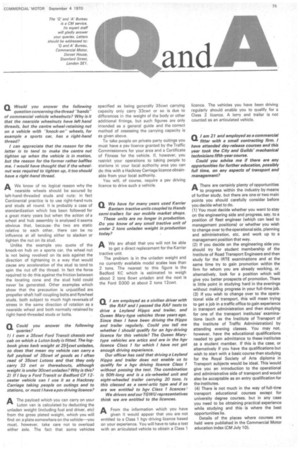Q Would you answer the following
Page 77

If you've noticed an error in this article please click here to report it so we can fix it.
question concerning the thread "hands" of commercial vehicle wheelnuts? Why is it that the nearside wheelnuts have left hand threads, but the centre wheel-retaining nut on a vehicle with "knock-on" wheels, for example a sports car, has a right-hand thread?
I can appreciate that the reason for the latter is to tend to make the centre nut tighten up when the vehicle is in motion, but the reason for the former rather baffles me. would have thought that if the wheelnut was required to tighten up, it too should have a right-hand thread.
AWe know of no logical reason why the
nearside wheels should be secured by left-hand-threaded studs and nuts: in fact Continental practice is to use right-hand nuts and studs all round. It is probably a case of standardization which has been followed for a great many years but when the action of a wheel and hub assembly is analysed it seems obvious that, because the two are static relative to each other, there can be no influence at all tending either to slacken or tighten the nut on its stud.
Unlike the example you quote of the knock-on hub on a sports car, the wheel nut is not being revolved on its axis against the direction of tightening in a way that would cause any acceleration of the stud to tend to spin the nut off the thread. In fact the force required to do this against the friction between the locating cone and the stud hold could never be generated. Other examples which show that the precaution is unjustified are propeller-shaft half-coupling bolts and flywheel studs, both subject to much high reversals of stress in the same direction of rotation as a nearside wheel and both normally retained by right-hand-threaded studs or bolts.




























































































































